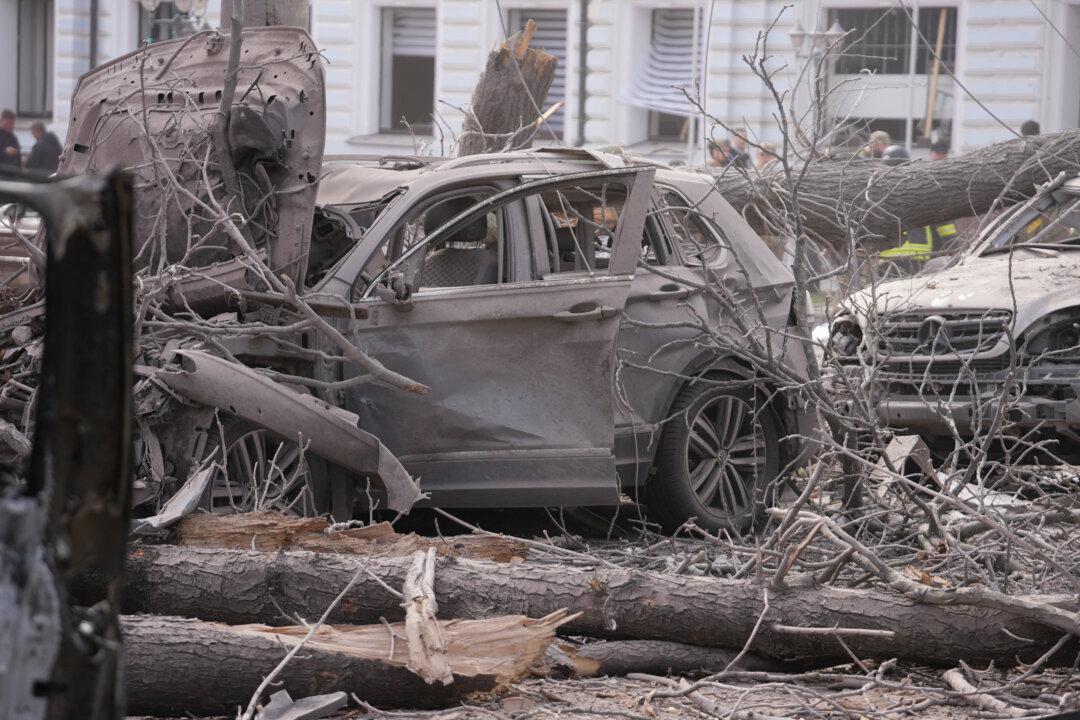Russia struck several Ukrainian energy sites with missiles and drones on Jan. 15 in what appeared to be retaliation for a missile attack two days earlier on Russia’s western Bryansk region.
“It’s the middle of winter and the target for the Russians remains unchanged: our energy infrastructure.”
According to the Ukrainian leader, Russia launched scores of drones overnight at multiple targets in western Ukraine, followed by a daytime missile attack.
Out of some 40 incoming Russian missiles, at least 30 were downed by Ukrainian air defenses, according to Zelenskyy.
“Among their objectives were gas and energy facilities that sustain normal life for our people,” he said.
According to the governor of Ukraine’s Lviv region, two energy facilities were damaged by the strikes.
Energy infrastructure in Ukraine’s Ivano-Frankivsk region also came under attack, the governor of that region said.
No injuries were reported in either region, according to the two governors.
The Russian Defense Ministry has since acknowledged the strikes.
“The goal of the strike has been achieved,” the ministry stated. “All assigned targets have been engaged.”
The Epoch Times could not independently verify claims made by either side of the conflict, which is set to enter its third year next month.
In 2022, Russia invaded and effectively annexed broad swaths of territory in eastern and southeastern Ukraine.
Since then, Russia has staged frequent attacks—typically using missiles and drones—on Ukrainian energy sites located behind the 600-mile-long front line.
Repeated bombardments have reportedly knocked out about half of Ukraine’s power-generating capacity, leading to frequent blackouts across the country.
Moscow has stated that it uses precision weapons to avoid killing civilians, claiming that all strikes on Ukrainian infrastructure serve a purely military purpose.
Kyiv and its Western allies say Russian attacks on civilian infrastructure—especially energy sites—constitute war crimes.

Barrage Follows Long-Range Missile Attack
The aerial assault came less than 48 hours after a dozen missiles were fired from Ukrainian territory into Russia’s western Bryansk region.According to the Russian Defense Ministry, the salvo included six U.S.-made Army Tactical Missile System missiles and six UK-made Storm Shadow missiles.
All missiles were downed before reaching their targets, the ministry stated, claiming that two other Storm Shadows—also fired from Ukraine—had been intercepted over the Black Sea.
On the same day, Ukraine carried out a wide-ranging drone attack on multiple targets in southern and western Russia.
According to Ukrainian military officials, drones struck a fuel depot in Russia’s southwestern Saratov region near the border with Kazakhstan.
Saratov’s governor later confirmed that two industrial sites had “sustained damage”—although he did not elaborate—as a result of the drone attack.
In remarks cited by The Kyiv Independent, Ukraine’s 14th drone regiment stated that the attacks were part of a “comprehensive operation” aimed at military targets inside Russian territory.
The Ukrainian General Staff later acknowledged that its forces had targeted military facilities in Russia’s Bryansk, Saratov, Tula, and Tatarstan regions.
It refrained from revealing what weapons were used but stated that Ukrainian drone and missile forces had participated in the operation.
Following Kyiv’s drone and missile attacks, Moscow pledged to retaliate.
“These actions of the Kyiv regime, supported by Western curators, will not go unanswered,” the Russian Defense Ministry stated on Jan. 14.
In a dramatic policy shift in November 2024, U.S. President Joe Biden, whose term will expire next week, gave Kyiv permission to use advanced U.S. missile systems to strike targets deep inside Russia.
President-elect Donald Trump, who will replace Biden on Jan. 20, has called Washington’s policy shift a “big mistake,” pledging to end the conflict within months of his return to the White House.







